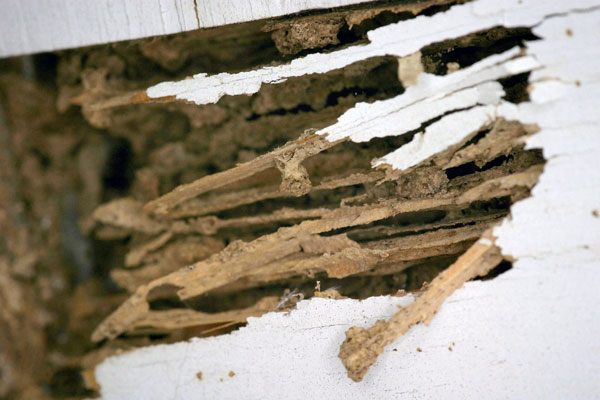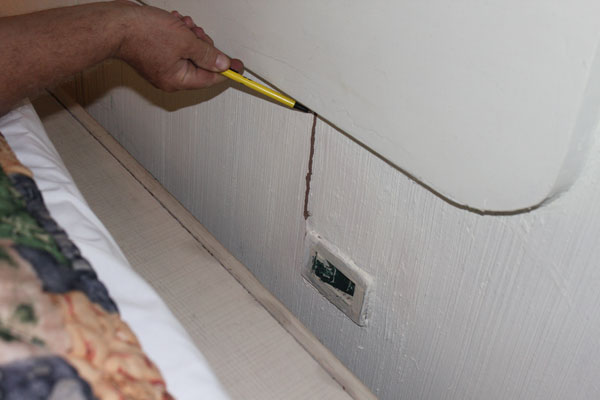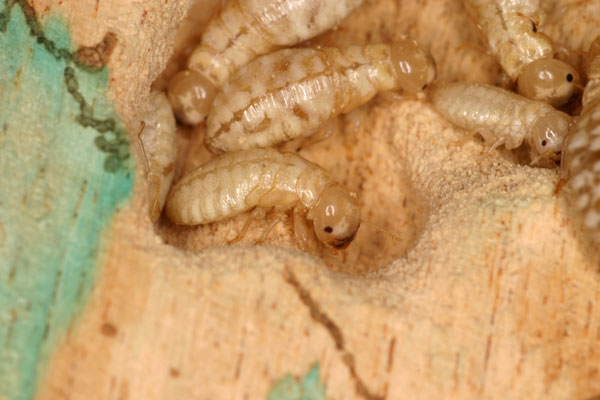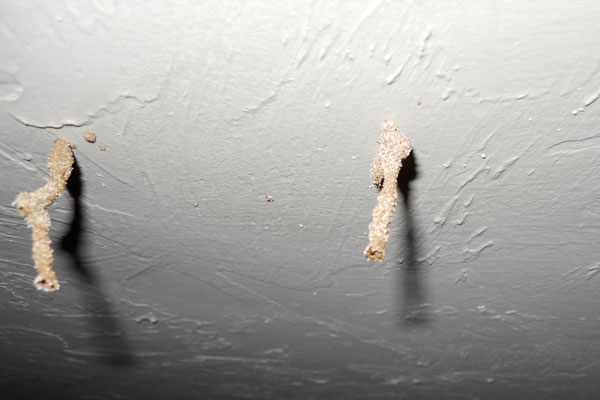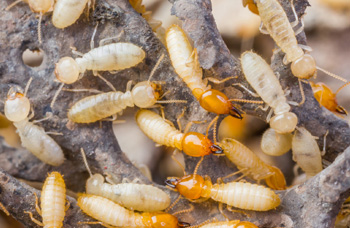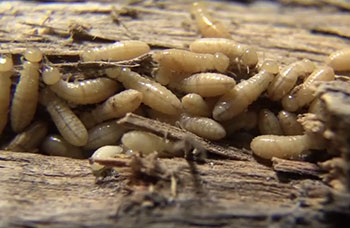Termite Types & Facts
Termite Facts
- Termites generally swarm in the spring. It is important to get an annual termite inspection to prevent costly damage.
- Termites also swarm in the late summer
- One colony can contain an average of 3 million members. There have been documented cases where 70 million termites have been found.
- Termite colonies are often larger (and more damaging) in a home infestation than in nature
What is a Termite Inspection?
Termites are relentless pests and if left untreated, termites can cause severe structural damage to your home. It is critical for homeowners to get a termite inspection every year, especially if you have seen evidence of termites or experienced an infestation in the past. When conducting an inspection, the inspector will look for evidence of all types of pests, not just termites.
Some common signs of termite activity that the homeowner can observe are; subterranean termite mud tubes on a wall, visual damage to wood inside and outside of the home and wings on windowsills. The inspector will also look for possible entry points to detect the home base of the termite activity. Special attention is given to areas where conditions are conducive to termites such as sources of moisture, cracks in foundation and other known harborage or nesting areas. Inspections vary in length of time depending on the size and complexity of features in and around the home, be sure to set aside ample time in order to ensure that the inspection is completed as thoroughly as possible.
Before beginning an inspection, the inspector will typically ask the homeowner a series of questions to get a better understanding of the home’s history. The year a home was built, additions made to the home, past termite problems and treatments used where applicable, will help the inspector key in on specific areas of your home as they may have an increase in the likelihood of termite activity. Of course, if you have seen physical evidence of activity, be sure to show the inspector where the suspected activity is so he or she can conduct a thorough inspection of the site. Truly Nolen takes special care to detail the areas of the home where termite activity is found. Your inspector will create a thorough graph of your home, plotting important structural details that are critical when developing your treatment plan.
Signs of Termite Damage
 Termite Wood Damage
Termite Wood Damage Termite Tubes on Exterior
Termite Tubes on Exterior Termite Tubes Inside Home
Termite Tubes Inside Home Termite Wood Damage
Termite Wood Damage Drywood Termites
Drywood Termites Termite Tubes on Ceiling
Termite Tubes on Ceiling
Where is the Inspector Looking Inside My Home?
The inspector will begin at the front door, thoroughly checking every room for evidence of infestation and/or decay damage. The inspector will check doorframes, gently probing suspicious areas with a special sounding tool that checks to see if wood has become hollow. He will then check wall surfaces, ceilings, floors, baseboards and wood trim for slightly raised areas in paint or under wallpaper. Any raised point many indicate termite activity. He or she will also check for exit holes and dropped wings on door frames and window sills. The inspector will then examine cracks in cabinets as well as interior door and window frames. If there is linoleum flooring in the home, soft spots can indicate wood damage, which can be caused by termites.
In order to inspect the structure, the inspector uses a special sounding tool to detect hollowed-out areas in wooden surfaces. When tapping the wood of the structure, the inspector will be able to hear a different sound if the wood is damaged.
In addition to the interior and the exterior of your structure, the inspector will check the attic of the home for damage. He will examine the roof rafters that support the roof sheathing, which is the roofing surface visible from inside the attic, ridge pole which is the top wood member to which the rafters are attached, joists to which the ceiling is attached, and top plates of all interior partitions to which all wall studs are attached. Additionally, the inspector will check the crawl space under your home and determine if there is damage to wood beams, floor joists, foundation walls and piers, pipes and fireplace foundation. The inspector will be looking at any wood structure or any wood debris found outside your home.
Any termite damage in the perimeter of the structure, expansion joints, cracks in slab or plumbing penetration in kitchens, bathrooms or laundry rooms are considered critical and should be taken care of as quickly as possible in order to maintain the safety and functionality of your home or business.
Where is the Inspector Looking Outside of My Home?
After inspecting the interior of a home, the inspector will move to the exterior. The inspector will begin by walking the perimeter of the structure as close to the foundation as possible. He will look for wood-to-earth points of contact, such as siding and veneer. He will examine wooden structures, such as fences or stored lumber, look for mud tubes running up the exterior of the foundation wall, observe drainage patterns, examine wooden structures such as siding, windows and frames, and check the eaves of your house especially where the gutters and downspouts are attached.
How Often Should You Get a Termite Inspection?
Termite infestations can be difficult to catch without a full inspection so it is wise to have your home inspected for termite damage every year. This ensures that a termite problem can be found before the damage gets out of hand. If at any time you believe that your home or business has a termite problem, call immediately to schedule an appointment for a full inspection and DON’T WAIT for your next annual inspection.
Additional Information
- What Are Termites?
- Termite Identifier
- How to Get Rid of Termites
- Common Signs of Termite Infestation
- Termite Concerns for Florida Residents
- Termite Video Gallery
